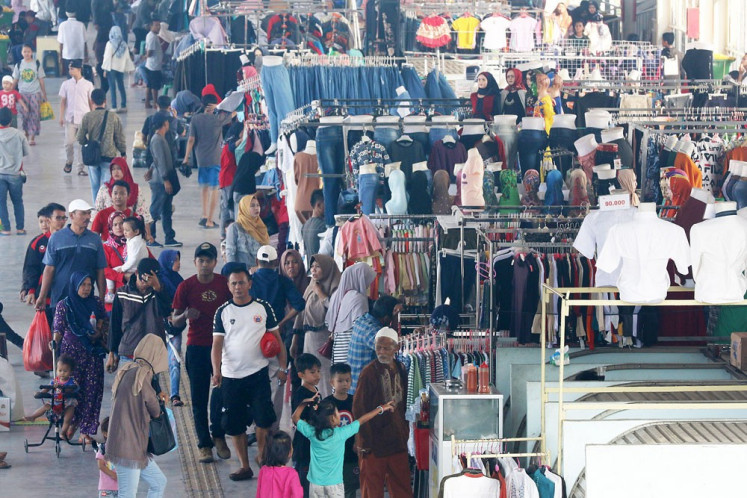Foreign investment and Indonesia's weak human capital
Unfortunately, Indonesia will more likely be used as a target market, not as an export production base.
Change text size
Gift Premium Articles
to Anyone
 Pledge to the nation: Students of junior and senior high schools in Bogor, West Java, attend the celebration of the Youth Pledge Day on Oct.28. (Antara/Arif Firmansyah)
Pledge to the nation: Students of junior and senior high schools in Bogor, West Java, attend the celebration of the Youth Pledge Day on Oct.28. (Antara/Arif Firmansyah)
I
nvestment in Indonesia is still dominated by foreign direct investment (FDI), which accounted for 61.4 percent in the first half of 2017. Some people may argue that a dependency on FDI may increase the economy’s vulnerability, especially if there is an outflow, but our inability to finance domestic investments means we still need foreign funds.
FDI in Indonesia has continued to increase from year to year. According Investment Coordinating Board (BKPM) data, FDI grew 5.8 percent year on year during the first half. This proves that Indonesia is still attractive to foreign investors, as was confirmed by last year’s Global Investment Trends Monitor published by the United Nations Conference on Trade and Development (UNCTAD).
The report, which is the result of a survey conducted among CEOs around the world about their investment plans through 2018, indicates that Indonesia ranked ninth out of the 15 main investment destination countries. Indonesia follows the United States, China, India, the United Kingdom, Germany, Japan, Brazil and Mexico, and is better than that of Malaysia, the Philippines, France, Australia, Myanmar or Vietnam.
This achievement is the result of the government’s simplifying licensing procedures. The easier process of investing in Indonesia has been demonstrated by improvements in the World Bank’s ease of doing business index: In 2017, Indonesia ranked 91, up 15 ranks from last year.
The government has been also loosening up on foreign investor ownership in some fields, such as restaurants, hotels and property. Its success in trimming bureaucracy and eradicating corruption are also important factors that make Indonesia a more attractive investment destination.
Indonesia is an attractive investment destination partly because of its sustainable economic growth, as well as its projected high population growth and high consumption.
As the country with the fourthlargest population in the world, Indonesia’s population is predicted to reach 270-300 million people by 2020-2030 according to Worldometers Statistics. During this decade, Indonesia is expected to also experience a demographic bonus, with a huge productive age population.

















